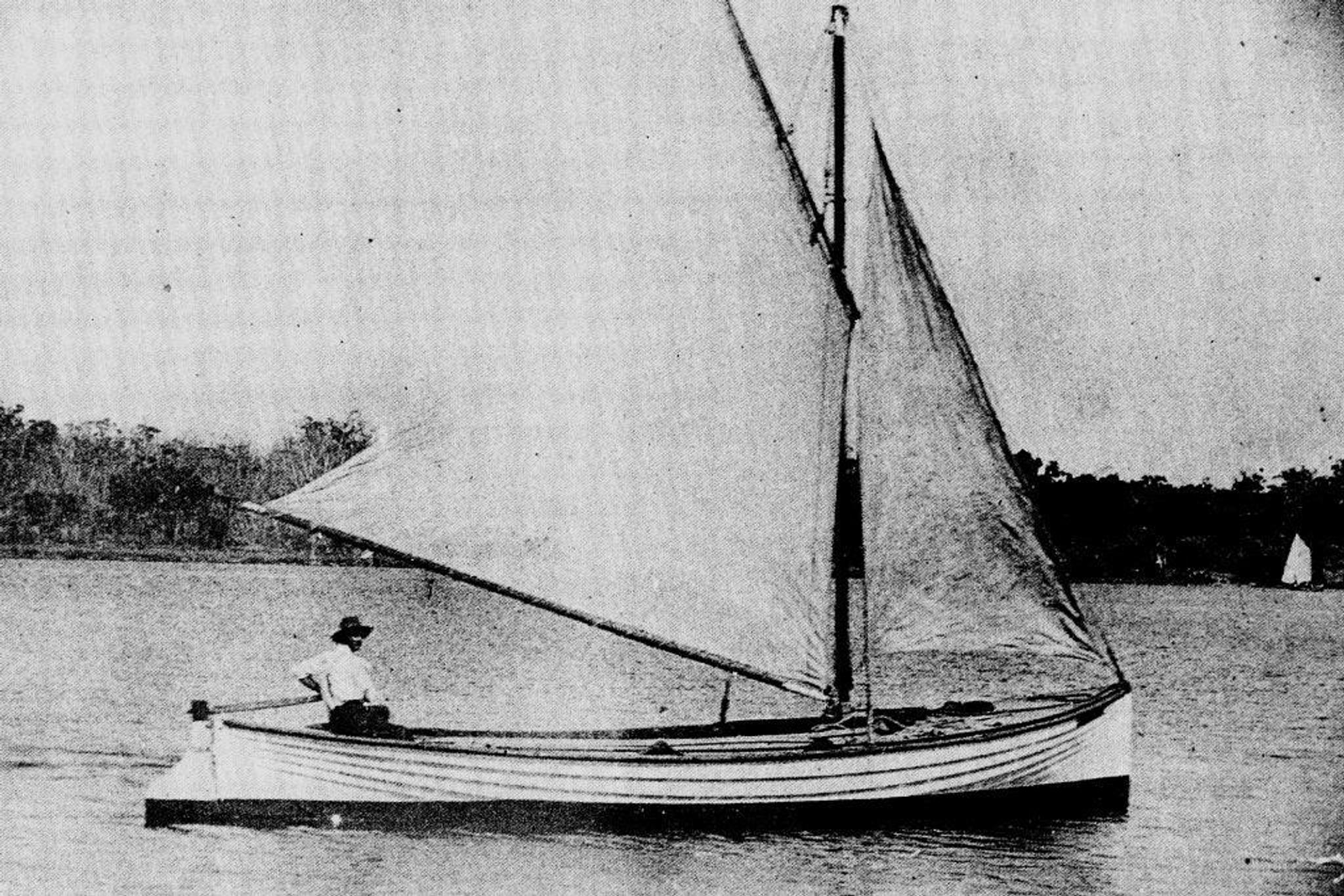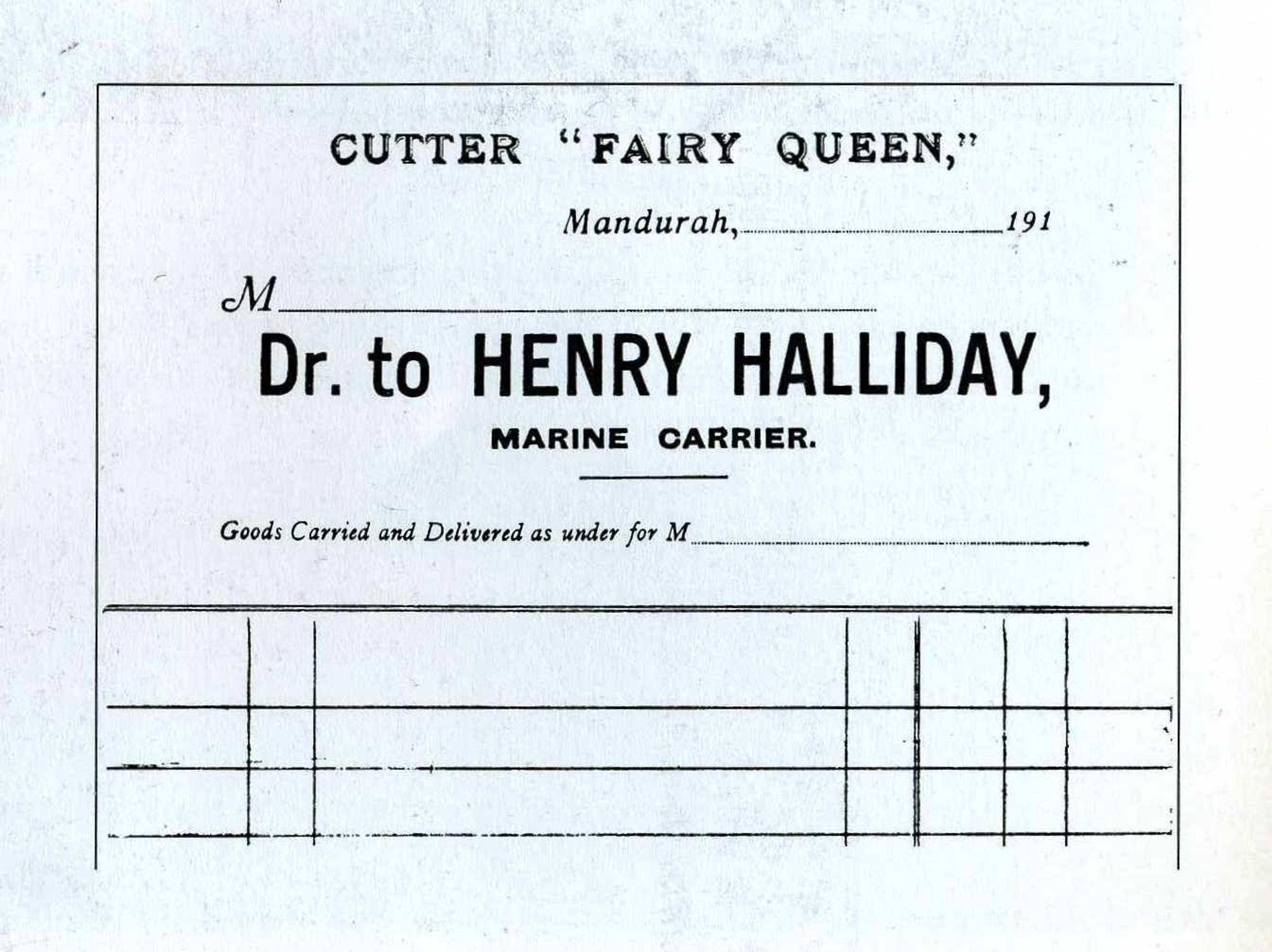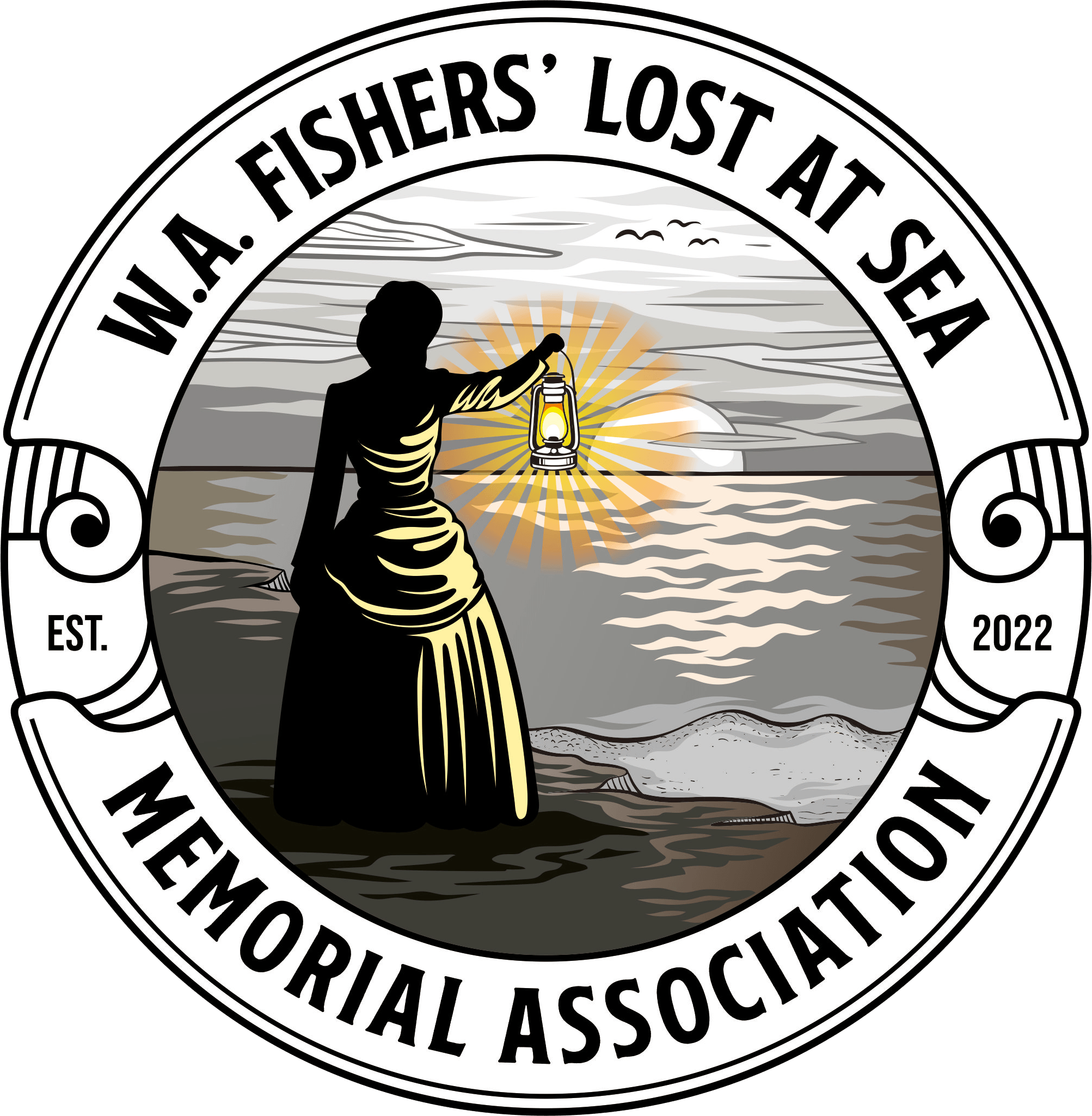Fairy Queen
Vessel Name: Fairy Queen
Henry Benjamin "Harry" Halliday
Lost at Sea; Body never recovered
12 September 1911

Henry Halliday onboard the Fairy Queen

The Halliday Family at the Chimneys

Halliday Docket

Henry Halliday Tombstone
Harry Halliday was born in Kent, England around 1858. By 1891, he was residing in Victoria and married Mary Ann Taylor. Henry’s occupation on the marriage certificate was recorded as a fisherman.
It is not known when he moved to WA, however, their first child, Eva, is recorded born in Victoria in 1892 (and dec 1893), with their second child, Edith, born in Fremantle in 1895 - 1971, followed by William (1899 - 1980) and Clive (1902 - 1987), both born in Mandurah.
The Halliday family is well known in the Mandurah area, previously living in a home that later became known as the 'The Chimneys'. At the point where the estuary meets the Peel Inlet, Halliday built a house here, on land rented from the Suttons. 'The Sticks', or, as it is also known, 'The Chimneys', is the channel where the estuary meets the Peel Inlet, just a mile south of central Mandurah.
In those times, the channel from the Mandurah estuary out to the ocean was a torturous channel marked with rough bush branches, or ‘sticks’. The final stick, closest to the estuary, was the biggest stick which the last fisherman out at night used to hang a hurricane lamp from to provide a bearing point to get back into the channel. Eventually, the Fisheries Department replaced the stick with a beacon.
It is unclear when the Fairy Queen was built, but it was likely a 28-foot Montague Whaler model, that was double-ended and clinker built. Henry used this between Mandurah and Fremantle from the late 1890’s, until 1911, when he was lost at sea.
At that time there were several fish canning ventures, the most prominent led by the Tuckey family. Sea mullet and kippered herring were canned – the mullet in summer and the herring in winter.
Fish were supplied by Seymour Ward, Jack and Eric Eacott, the Watches, the Melwoods and Ted Stinton, who were paid 12 to 15 shillings per 100 fish caught. Forty cases, each with 48 tins, would be shipped out weekly to Fremantle by several boats, led by the Tuckey family, Harry Halliday or Captain Cox. Fish could not be transported by road as it took too long without refrigeration, and the road was too bumpy.
Halliday bought fresh fish and sent it up by sea to Fremantle to be sold, and his house was easily located for fishermen to come in. The first telephone line in Mandurah ran from the Chimneys, to Tuckey’s Peel Inlet Preserving Works. It was used for Halliday to call the factory to tell them when the fishermen were bringing up a load of fish to be canned.
On Tuesday 12 September 1911, Halliday left Mandurah with one of these consignments. He should have returned to Mandurah by Friday, but as he did not appear, concerns were raised both in Mandurah and Fremantle, especially as there had been a spell of bad weather during the week. Halliday always made the journey alone, and despite remonstrations from fellow fishermen on the dangers of sailing alone, he continued to do so.
Captain Cox first made efforts to search for Halliday, having visited all the anchorages enroute, together with the bar at Mandurah, and various prominent points without discovering any signs of either Halliday, or his craft.
At midday on the 17 September William Dixon, of East Jandakot reported he had seen Halliday’s boat at Point Peron. Mounted-Constable Chandler of the Fremantle police, in company with a couple of Greeks, who were acquainted with the coast, visited Point Peron.
On the rocks, in a basin, the remains of the Fairy Queen was discovered in pieces. At that time there was a strong westerly current running at the Point, and it was surmised that Halliday’s body was likely carried out to sea.
Despite being a sailor all his life, he could not swim. Just a month or so prior, Halliday had located the whereabouts of a missing boat belonging to two Croatians (Austrians), who perished in the previous month (Garbin and Barbich), when returning from Fremantle to Mandurah.
A memorial headstone was erected at the Mandurah Cemetery in the Methodist section.
The Progress Association called for contributions to support the widow and three children, all less than 17 years of age, and the Mandurah community duly obliged. After his death, the house fell into disrepair and a bushfire burnt down the home, but the limestone chimneys of the smokehouse building remained as a landmark, giving their name to the place. Mary lived to be 84, and her memorial was added to her husband's headstone.
